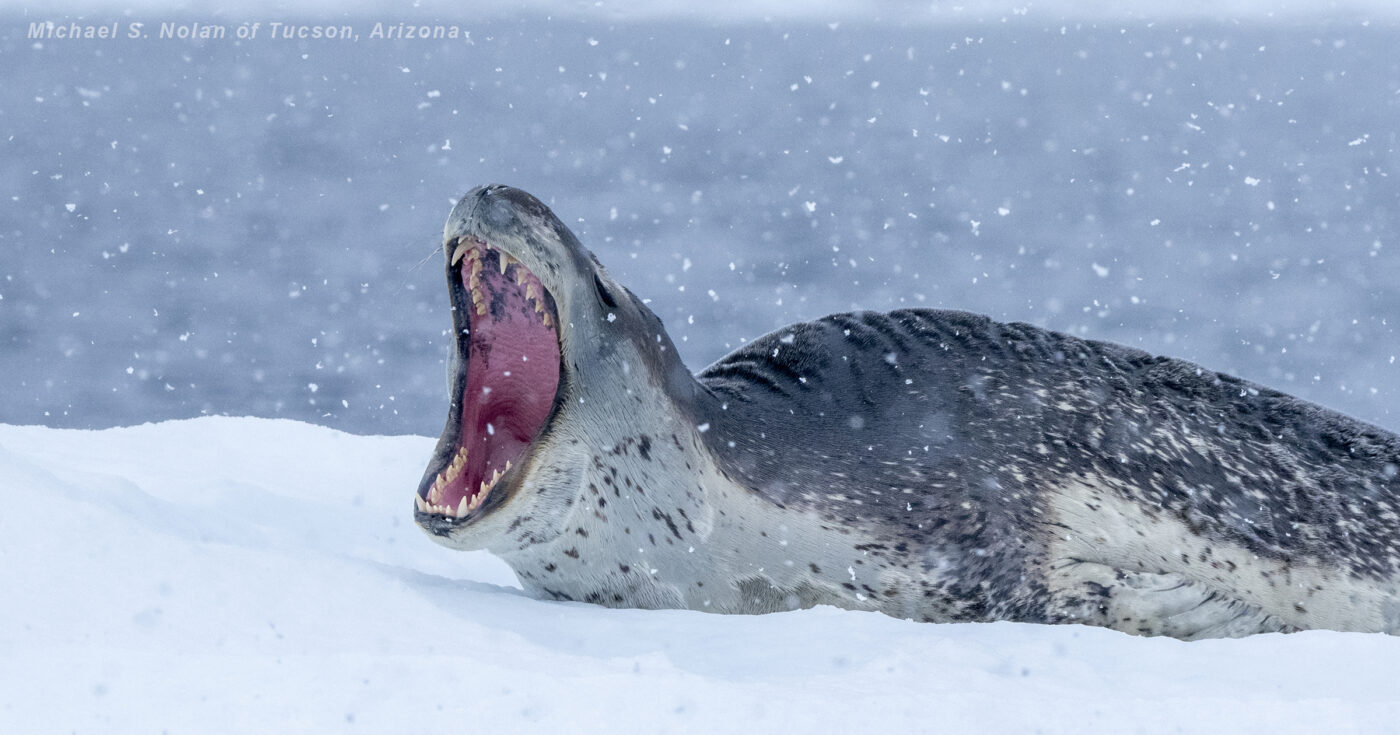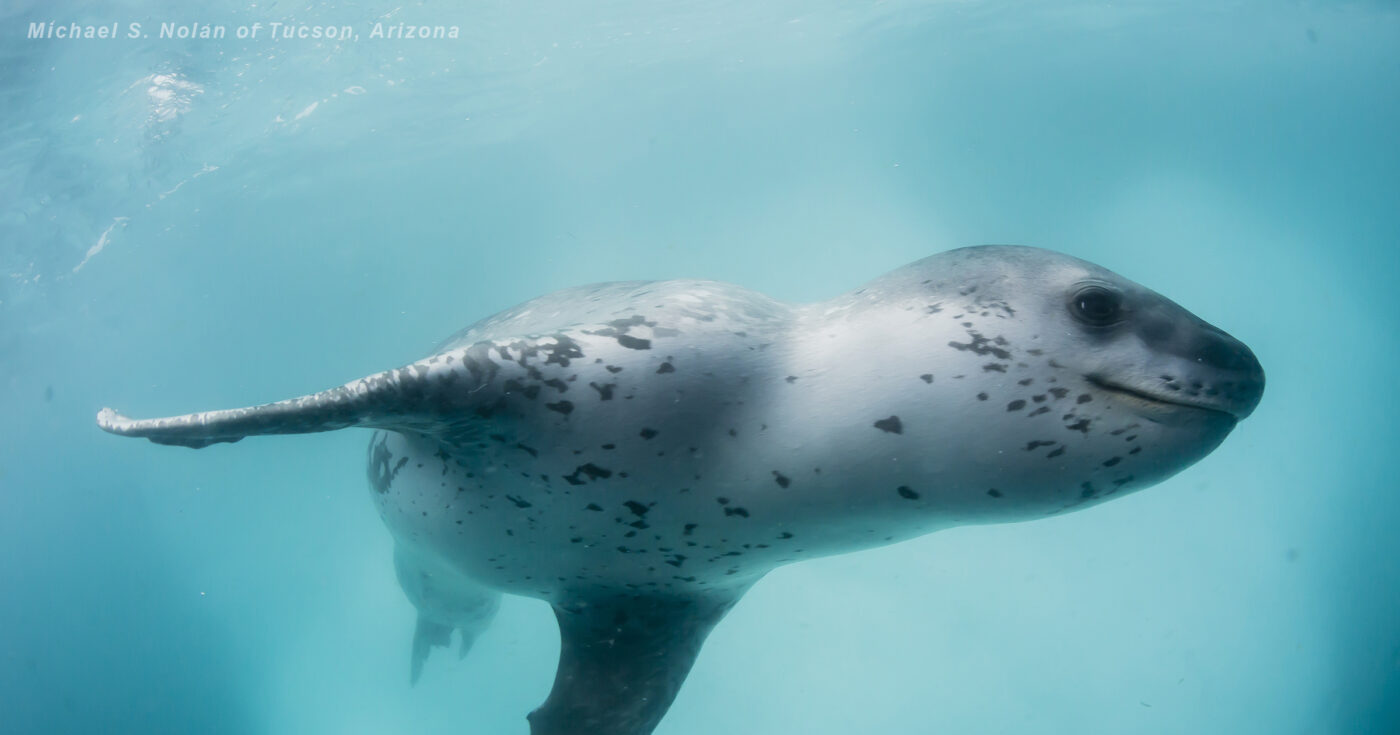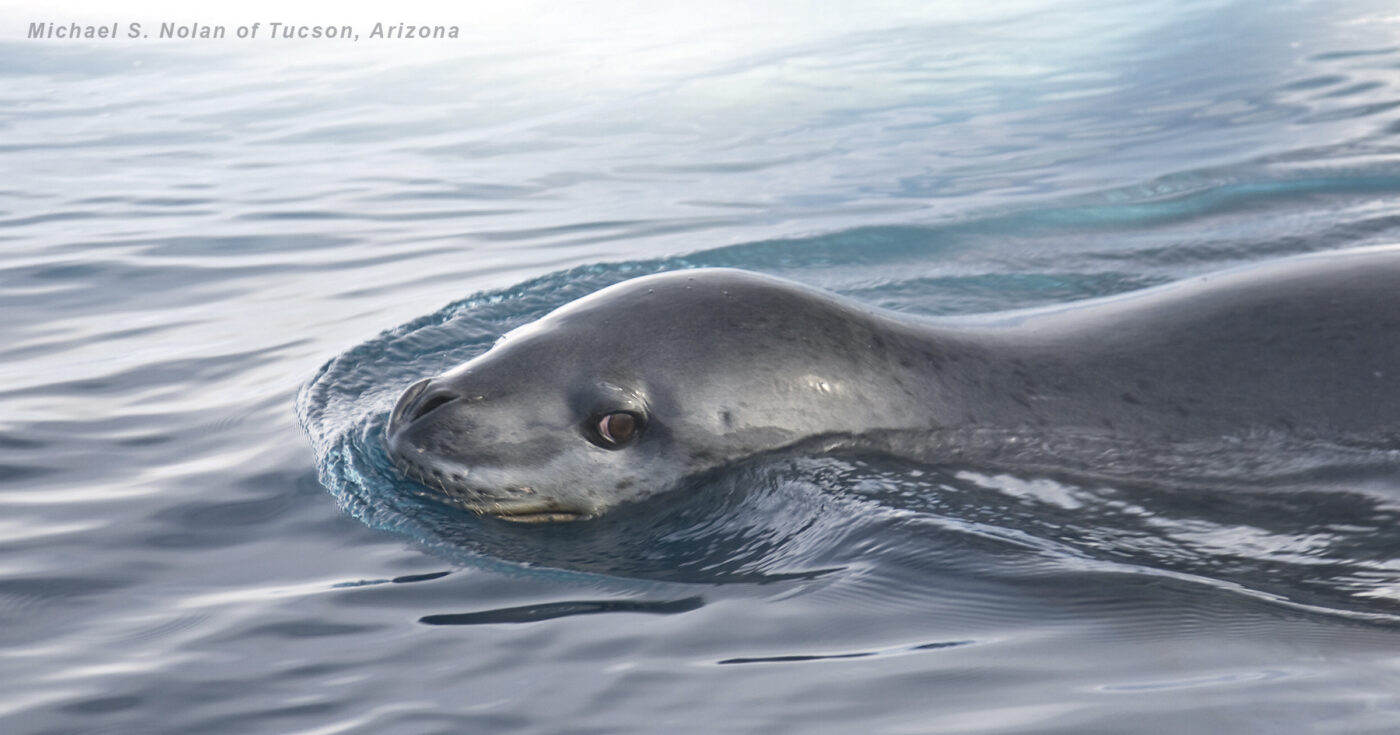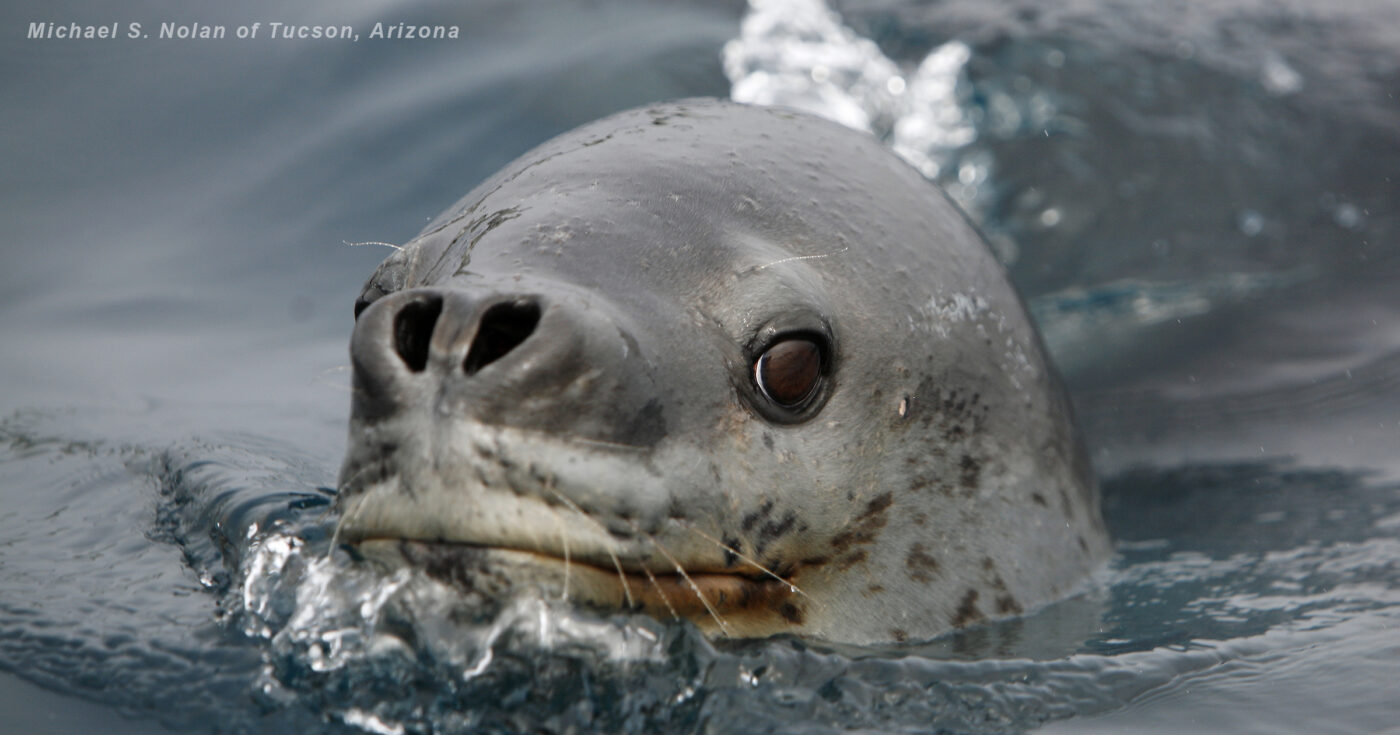
Very Important Predators
by Billy Timms
Leopard Seals
Photographs by wildlife photographer Michael S. Nolan of Tucson, Arizona
With perhaps the most inviting smile of all the animals who make Antarctica their home, the leopard seal should not be mistaken as friendly.
Leopard seals, scientifically known as Hydrurga leptonyx, are marine mammals who live on the large slabs of pack ice that make up the Antarctic and subantarctic islands, allowing them to hunt freely in the frigid waters surrounding them. Sharing their habitat with many other species often prevents these formidable predators from having to travel very far for their food.
As the second largest predator in the Antarctic, preceded by and preyed upon only by the killer whale, the leopard seal is responsible for much of the region’s population control. These fierce predators feed primarily on penguins but also on fish and smaller species of birds and marine mammals, including other types of seals.
Leopard seals are formidable hunters who utilize multiple tactics for obtaining their prey, even changing their strategies depending on what type of animal they are hunting. Known to be opportunistic predators, while hunting penguins these sea leopards often wait patiently just below the water’s surface, near the ice’s edge. As penguins move closer to the water, the seals make their move, quickly capturing their unsuspecting prey.

These very important predators have massive jaws, with long sharp canines, and trident shaped molars which enable their mouths to act as filters trapping krill while they swim. Their unmistakable spotted grey body is well insulated against frigid temperatures with a thick layer of blubber.

Leopard seals are solitary animals preferring to live and hunt alone, only seen with others during mating season or when raising pups.
Weighing up to 1300 lbs, female leopard seals are typically larger than males and can be as long as 11.5 feet. They have large front flippers which they use to propel themselves through the water at speeds up to 25 mph.

35,000 of these aggressive loners exist throughout Antarctica deeming them a species of “Least concern” by the IUCN. While the global climate may eventually lead to population issues, the Leopard seal continues to thrive.
-Billy Timms
– – –

Nature and the Environment was formed by BioTriad Environmental, Inc. to provide entertaining and informative media while keeping the wonders of nature in the public eye.
– – –

Our VIPs are critical for ecosystem health and stability. They are the masters of land, sea, and sky, the balancers of environments, and the most important predators on earth.


